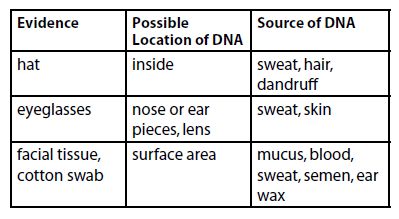- within Criminal Law, Government, Public Sector, Litigation and Mediation & Arbitration topic(s)
- with readers working within the Law Firm and Construction & Engineering industries
Introduction
Science plays a very important role in our lives. Our day to day activity is surrounded by science. Dictionary meaning of Science is "the intellectual and practical activity encompassing the systematic study of the structure and behavior of the physical and natural world through observation and experiment."
There are many branches of science one of which is life science, under which one studies about the cellular biology. DNA comes under the cellular biology. DNA, or deoxyribonucleic acid, is the hereditary material in humans. DNA is a nucleic acid generally regarded as a blueprint, a recipe or a code of an organism. The blueprint contains instructions which enable development of cells in to the body. And also controls the characteristics featured in a fully functional living structure through genes.
DNA fingerprinting: Weapon to solve Crime
DNA fingerprinting is a technique which helps forensic scientists and legal experts solve crimes, identity thefts, legal suits and terrorism cases. DNA samples are been collected for analyzing whether person is guilty or innocent. The possible locations of DNA on the evidence are as under1


The introduction of DNA fingerprinting helps solving crime and our Indian system is also not untouched with the same. In 2005 the Criminal Code of Procedure, 1973 was amended to allow for medical practitioners, after authorization from a police officer who is not below the rank of sub-inspector, to examine a person arrested on the charge of committing an offence and with reasonable grounds that an examination of the individual will bring to light evidence regarding the offence. Section 53 as amended includes:
"the examination of blood, blood stains, semen, swabs in case of sexual offences, sputum and sweat, hair samples, and finger nail clippings, by the use of modern and scientific techniques including DNA profiling and such other tests which the registered medical practitioner thinks necessary in a particular case".
DNA analysis is also of utmost importance in determining the paternity of a child in the cases of civil disputes. Need of this evidence is most significant in the criminal cases, civil cases, and in the maintenance proceeding in the criminal courts under section 125 of the Code of Criminal Procedure, 1973. Also, the Hon'ble Supreme Court's acceptance of Delhi High court judgment of ordering Veteran Congress Leader N.D. Tiwari to undergo the DNA test is very important from the viewpoint of the admissibility of such evidence. In this case, Rohit Shekar has claimed to be the biological son of N.D. Tiwari. It would be very interesting to see that how courts in India would allow the admissibility of DNA technology in the future.
In furtherance of the above there are certain provisions in the Indian Evidence Act, 1872 such as section 112 which reads as follows:
DNA fingerprinting has been used to solve many cases such as Priyadarshini Mattoo (Santosh Kumar Singh v. State thr. CBI)2, she was a 25-year-old law student who was found raped and murdered at her house in New Delhi in 1996. In the year 2006, the Delhi High Court found Santosh Kumar Singh guilty on both counts of rape and murder. Yet another case is of Naina Sahani murder case (State vs Sushil Sharma)3, Rajiv Gandhi assassination (State through superintendent of police CBI/SIT vs. Nalini and Ors.)4 The infamous Rajiv Gandhi assassination case of 1992 using DNA fingerprinting technology and many more cases are present as example.
Conclusion
DNA is a very important invention which helps the legal experts to solve many such crimes which were not possible to solve before as no evidence were present. These inventions saved many lives. We should thank science which is very useful for public at large because there are many examples present with us which shows that it really helped the common person. Courts have accepted the reliability of DNA testing and included DNA test results as evidence. The DNA evidence in the court of Law can punish or acquit a suspect. However, the accuracy of the technique has been challenged. This is one example of how scientific technology has reached the common man. It helps to resolve paternity cases, and is useful in identification, crime investigations.
Footnote
1. http://www.nij.gov/topics/forensics/evidence/dna/
basics/identifying-to-transporting.htm.
2. ( 2010 ) 9 SCC 747
3. 2007 CriLJ 4008
4. AIR1999SC2640
The content of this article is intended to provide a general guide to the subject matter. Specialist advice should be sought about your specific circumstances.


